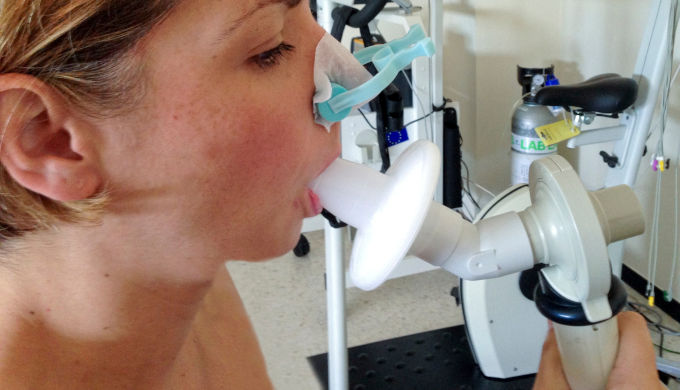Author: Lucy Piper
medwireNews: The diffusing capacity of the lungs for carbon monoxide (DLCO) could be a surrogate marker for overall disease severity in patients with systemic lupus erythematosus (SLE), suggest researchers in Rheumatology.
Erwan Le Tallec (Pontchaillou Hospital, Rennes, France) and colleagues found that abnormal DLCO, defined as below 70% of the predicted value, was significantly associated with “severe manifestations in SLE, involving lungs, nervous system, and kidneys.” DLCO was also a significant predictor of admission to intensive care and all-cause death.
For their retrospective study, the investigators collated information from the medical records of 232 SLE patients, including routine pulmonary function tests.
Among the participants, 86.2% were women and the majority were Caucasian, at 76.5%. The mean age at symptom onset was 30.0 years and diagnosis occurred at a mean of 32.3 years.
At any point during follow-up (median 12.1 years), DLCO was abnormal on at least one occasion in 66.4% of patients.
Factors at diagnosis that significantly and independently predicted abnormal DLCO versus normal DLCO during follow-up on multivariate analysis, included prior tobacco use, reported by 44% of patients, lymphadenopathy, which was seen in 18% of patients and antinucleosome autoantibodies, which occurred in 12.3%. The corresponding odds ratios (ORs) were 3.30, 3.75 and 4.63.
The researchers therefore recommend that “SLE patients, notably those with a DLCO alteration, should have a closer monitoring of cardiovascular risk factors, including smoking cessation,” and suggest that patients with antinucleosome autoantibodies and lymphadenopathy may be “a patient subgroup for which DLCO measurement would be the most beneficial.”
By contrast, photosensitivity, reported in 38.2% of patients, protected against DLCO alteration, reducing the risk by 80%.
There were also several characteristics that occurred over the course of follow-up that were significantly associated with impaired DLCO versus normal DLCO. These included current or past smoking (OR=2.06) and the clinical factors lymphadenopathy (OR=2.33), serositis (OR=2.99), including both pericarditis (OR=2.72) and pleuritis (OR=3.93), renal involvement (OR=2.47) specifically lupus nephritis class 5 (OR=8.31), neurological involvement (OR=2.90) and interstitial lung disease (OR=10.19).
In terms of treatments, altered DLCO was significantly more likely to occur among patients taking corticosteroids (OR=2.39) or rituximab (OR=5.35). And it occurred more frequently among people who had anti-DNA, anti-Smith, anti-nucleosome or antiphospholipid autoantibodies, at respective ORs of 2.06, 2.42, 2.20 and 1.99, and in those positive for lupus anticoagulant (OR=3.17).
DLCO was significantly less likely to occur, however, in those with photosensitivity at any point over follow-up at an OR of 0.51.
Patients with DLCO alteration were more likely than those with normal DLCO to have higher 1997 ACR scores (OR=1.27) and 2019 EULAR/ACR total scores (OR=1.07), “reflecting cumulative SLE clinical and immunological manifestations at the end of follow-up,” say Le Tallec et al.
A total of 19.4% of patients were admitted to intensive care over follow-up, almost half of which were due to disease flare, with most involving the heart, and 4.3% of patients died, four from cardiovascular diseases, two due to severe lupus flares, two from septic shock and one each from cancer and haemorrhagic shock.
DLCO alteration either at baseline or at any time during follow-up was significantly associated with a higher probability of intensive care admission (OR=4.21) but not death when considered as a single entity, probably “due to the small number”, say the authors. However, as the causes contributing to each were similar, they considered them as a composite endpoint, for which the risk was significantly increased among those with DLCO alteration.
“Our results highlight the relevance of DLCO measurement at diagnosis and during follow-up in SLE patients,” the investigators summarise.
They say that “[f]urther studies are needed to establish whether all SLE patients should have a routine [pulmonary function test], including those who are asymptomatic, or only selected subgroups of patients with specific phenotypes.”
News stories are provided by medwireNews, which is an independent medical news service provided by Springer Healthcare Ltd. © 2023 Springer Healthcare Ltd, part of the Springer Nature Group
This independent news story was supported by an educational grant from L’Institut Servier, Suresnes, France.
Image Credits: © jgaunion / Getty Images / iStock



